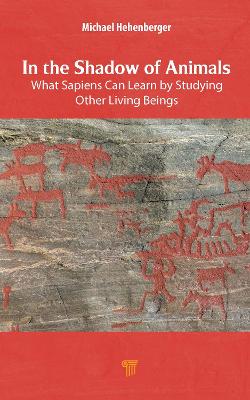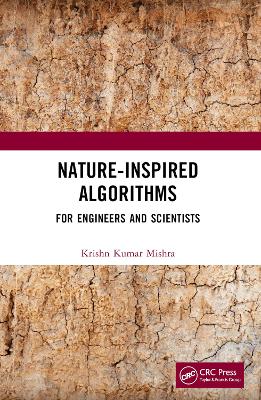In the Shadow of Animals
 portes grátis
portes grátis
In the Shadow of Animals
What Sapiens Can Learn by Studying Other Living Things
Hehenberger, Michael
Jenny Stanford Publishing
10/2024
368
Dura
9789815129410
Pré-lançamento - envio 15 a 20 dias após a sua edição
Descrição não disponível.
Introduction Homo sapiens: Strengths and Weaknesses PROs and CONs of LIVING WITH AMIMALS COVID-19 What Humans can learn by studying Animals A. Human Knowledge derived from Genomic Model Organisms B. Human Knowledge derived from Biomedical Model Organisms Fruit Fly (Drosophila melanogaster) Mouse (Mus musculus) California Sea Slug (Aplysia californica) The Zebrafish (Danio Rerio) Human Health Benefits The Domestic Pig (Sus Domesticus) The Elephant (Loxodonta africana and Elephas maximus) Naked Mole Rat (Heterocephalus glaber) The Jellyfish (Scyphozoa, etc.) The Cone Snail (Conus magus, etc.) The Komodo Dragon (Varanus komodoensis) The Gila Monster (Heloderma suspectum) The Salamander (Urodela) The Burmese Python (Python bivittatus) Human Performance benefits The Atlantic Bay Scallop (Argopecten irradians / Pectinidae) The Owl (Strigiformes) The Pit Vipers (Crotalinae) The Vampire Bat (Desmodus rotundus) Electric Eel (Electrophorus electricus) and Ghost Knifefish (Apteronotidae) The Dolphin (Cetacea / Delphinidae, etc.) The Octopus (Cephalopoda) Hummingbirds (Trochilidae) The Peregrine Falcon (Falco peregrinus) The Bar-headed goose (Anser indicus) The Wild Yak (Bos mutus) and Domestic Yak (Bos grunniens) The Penguins (Sphenisciformes) The Polar Bear (Ursus maritimus) The Cheetah (Acinonyx jubatus) The Dog (Canis lupus familiaris) The Platypus (Ornithorhynchus anatinus) Conclusions Appendix A: Evolution of Life on Earth What is Life? How did life evolve on planet Earth? Adaptation Sexual Adaptations Appendix B: Genetic Engineering DNA and -OMICS CRISPR Appendix C: Metric versus US Customary Units
Este título pertence ao(s) assunto(s) indicados(s). Para ver outros títulos clique no assunto desejado.
Animal Physiology;Education Philosophy
Introduction Homo sapiens: Strengths and Weaknesses PROs and CONs of LIVING WITH AMIMALS COVID-19 What Humans can learn by studying Animals A. Human Knowledge derived from Genomic Model Organisms B. Human Knowledge derived from Biomedical Model Organisms Fruit Fly (Drosophila melanogaster) Mouse (Mus musculus) California Sea Slug (Aplysia californica) The Zebrafish (Danio Rerio) Human Health Benefits The Domestic Pig (Sus Domesticus) The Elephant (Loxodonta africana and Elephas maximus) Naked Mole Rat (Heterocephalus glaber) The Jellyfish (Scyphozoa, etc.) The Cone Snail (Conus magus, etc.) The Komodo Dragon (Varanus komodoensis) The Gila Monster (Heloderma suspectum) The Salamander (Urodela) The Burmese Python (Python bivittatus) Human Performance benefits The Atlantic Bay Scallop (Argopecten irradians / Pectinidae) The Owl (Strigiformes) The Pit Vipers (Crotalinae) The Vampire Bat (Desmodus rotundus) Electric Eel (Electrophorus electricus) and Ghost Knifefish (Apteronotidae) The Dolphin (Cetacea / Delphinidae, etc.) The Octopus (Cephalopoda) Hummingbirds (Trochilidae) The Peregrine Falcon (Falco peregrinus) The Bar-headed goose (Anser indicus) The Wild Yak (Bos mutus) and Domestic Yak (Bos grunniens) The Penguins (Sphenisciformes) The Polar Bear (Ursus maritimus) The Cheetah (Acinonyx jubatus) The Dog (Canis lupus familiaris) The Platypus (Ornithorhynchus anatinus) Conclusions Appendix A: Evolution of Life on Earth What is Life? How did life evolve on planet Earth? Adaptation Sexual Adaptations Appendix B: Genetic Engineering DNA and -OMICS CRISPR Appendix C: Metric versus US Customary Units
Este título pertence ao(s) assunto(s) indicados(s). Para ver outros títulos clique no assunto desejado.







